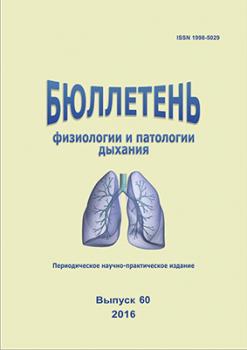Habarovsk, Khabarovsk, Russian Federation
Habarovsk, Khabarovsk, Russian Federation
Qualitative and quantitative assessment of microbes making the microbiocenosis of genital tract in women with inflammatory and proliferative diseases of cervix using Femoflor-16 test was the aim of the research. Scrapings of cervix and vaginal fornix in 100 women of reproductive age with cervicitis, vaginitis and in 31 women with cervical pseudoerosion (ectropion) were studied. The control group consisted of 35 relatively healthy women preparing for pregnancy. Cervical and vaginal dysbiosis was found in women with inflammatory diseases of cervix in 37.0% of cases, in women with pseudoerosion in 32.2% of cases. These are 3.3 (р<0.005) and 2.8 (р<0.02) times as much as in the group of healthy women preparing for pregnancy (11.1%). Dysbiosis structure was represented primarily by obligate anaerobic agents such as Gardnerella vaginalis, Atopobium vaginae, Eubacterium spp. in association with other opportunistic bacteria that are clinically most significant microorganisms colonizing female genital tract. Mycoplasma and yeast-like fungi of Candida species were found primarily with anaerobes. Aerobic and mixed dysbiosis were only found in 7% of cases in women with inflammatory diseases. Femoflor-16 test is a readily available, fast, efficient, up-to-date method enabling one to begin with early adequate antibacterial therapy and monitor it.
dysbiosis, vaginitis, cervicitis, cervical ectropion, real-time polymerase chain reaction.
1. Grodnitskaia E.É., Shamanova M.B., Paleĭ O.S., Kurtser M.A. Vaginal microbiocenosis and ways for its correction in women with a history of habitual abortion in late gestation periods. Rossiyskiy vestnik akushera-ginekologa 2011; 11(1):22-25 (in Russian).
2. Kalinkina O.B. The effectiveness of the recovery vaginal biocenosis of women with polycystic ovary syndrome in the treatment of cervical pseudoerosion. In: International scientific-practical conference «The prevention of cervical carcinoma: prospection». Moscow; 2008:62-63 (in Russian).
3. Kudryavtseva L.V., Il´ina E.N., Govorun V.M., Minaev V.I., Zaytseva S.V. Lipova E.V., Batkaev E.A. Bacterial vaginosis. Moscow; 2003 (in Russian).
4. Plakhova K.I., Gomberg M.A., Atroshkina M.E., Ilyina E.N., Govorun V.M. The role of Atopobium vaginae in relapses of bacterial vaginosis. Vestnik dermatologii i venerologii 2007; 5:10-13 (in Russian).
5. Rakhmatulina M.R., Plakhova K.I. Bacterial vaginosis associated with Atopobium vaginae: the current principles of diagnosis and therapy. Akusherstvo i ginekologiya 2012; 3:88-92 (in Russian).
6. Sukhikh G.T., Prilepskaya V.N., Trofimov D.Yu., Donnikov A.E., Aylamazyan E.K., Savicheva A.M., Shipitsyna E.V. Use of the method of polymerase chain reaction in real time to assess of microbiocenosis of the urogenital tract in women (test Femoflor®): medical technology. Moscow; 2011 (in Russian).
7. Tikhomirov A.L. Bacterial vaginosis. Is it always and only if antibiotics? Consilium medicum 2011; 13(6):45-49 (in Russian).
8. Shipitsyna Е.V., Martikainen Z.M., Vorobyova N.Е., Ermoshkina М.S., Stepanova О.S., Donnikov А.Е., Skorkina J.А., Tumbinskaya L.V., Savicheva А.М. Investigation of vaginal microbiocenosis using the test Femoflor. Zhurnal akusherstva i zhenskikh bolezney 2009; LVIII(3):44-50 (in Russian).





